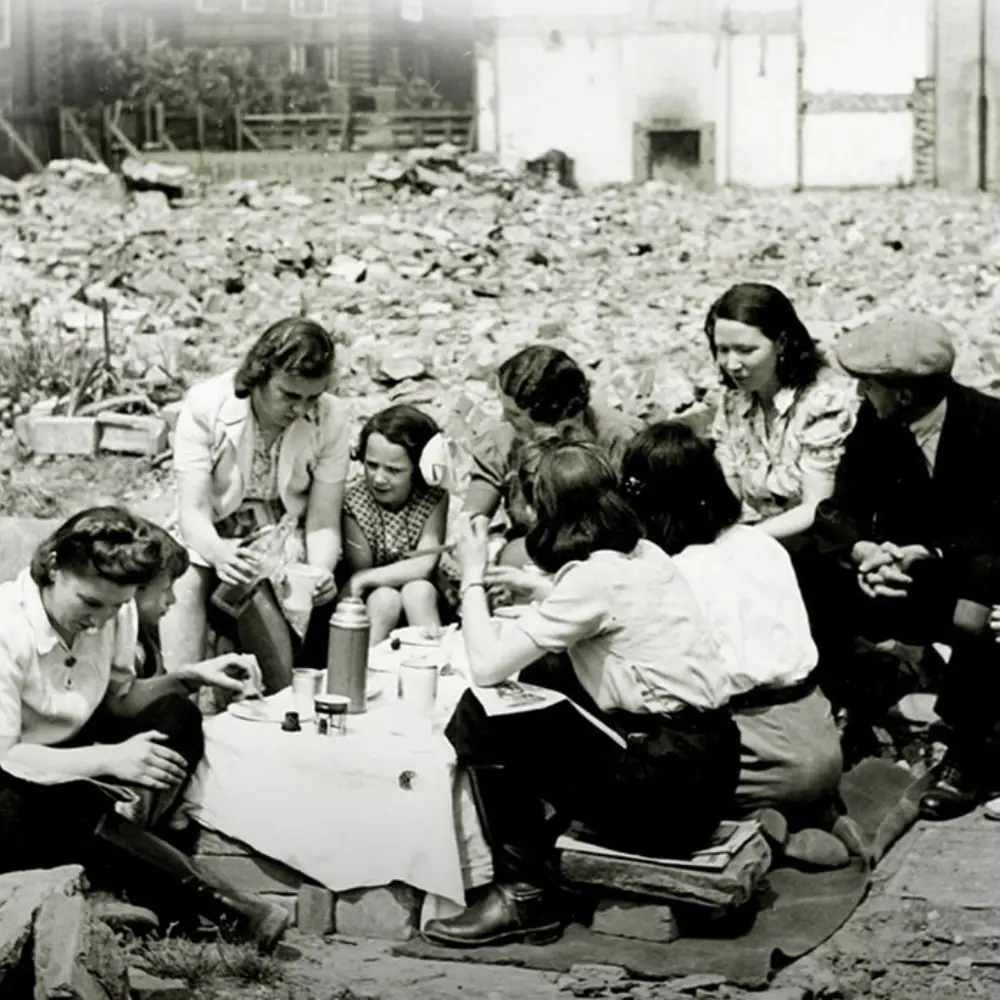For both aficionados and those who indulge in coffee casually, the pursuit of the ideal brew can be a seemingly never-ending voyage. The sheer number of factors that influence the taste and quality of your coffee can make mastering the art of brewing seem like a daunting task. However, do not fret, for the solution to unlocking a realm of rich, aromatic, and perfectly balanced coffee lies within your grasp. Enter the coffee-to-water ratio – an essential component that plays a pivotal role in the flavor, potency, and uniformity of your daily cup of java. In this definitive guide, we shall delve deep into the world of this ratio, exploring diverse brewing methods, expert suggestions, and the scientific principles behind brewing excellence. So, grab your most beloved mug, and let us embark on the journey toward achieving coffee nirvana.
Coffee-to-Water Ratio: Key Takeaway
- Master the coffee-to-water ratio for the perfect brew, with ratios varying based on the brewing method.
- Adjust the ratio according to the grind size for optimal flavor and balance.
- Experiment with different brewing techniques and coffee beans to discover your ideal taste and texture.
- Accurate measurements of coffee and water, and attention to water quality and temperature, ensure consistency and replication of a perfect cup.
- Customize your coffee experience by mastering the coffee-to-water ratio, grind size, and brewing method for a range of flavors and textures.
Understanding Coffee-to-Water Ratios
The delicate balance between coffee and water holds the key to brewing an exceptional cup of coffee. To achieve the desired taste, strength, and consistency in your brew, it is essential to comprehend and master these ratios. In this section, we shall delve into the significance of coffee-to-water ratios, present the Golden Ratio as a starting point, and explore the adjustments necessary for different brewing methods and individual preferences. Brace yourself to unleash the full potential of your coffee experience.
The Importance of Coffee-to-Water Ratio in Brewing
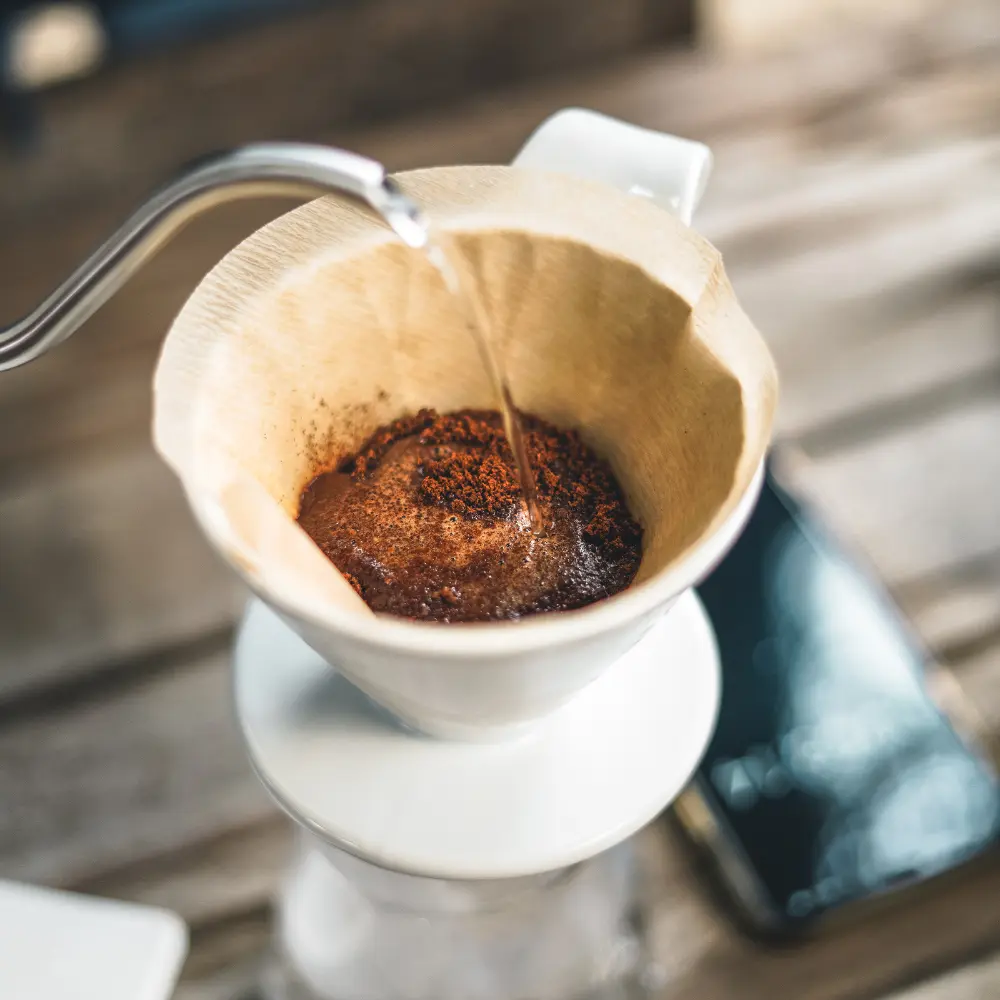
This ratio holds immense importance in the brewing process as it directly impacts the taste, strength, and quality of your coffee. A well-balanced ratio ensures that the coffee grounds are neither over-extracted, which can lead to bitterness, nor under-extracted, which may result in a weak, watery brew. By finding the ideal ratio for your brewing method and personal taste preferences, you can achieve a consistently delicious cup of coffee every time.
The Golden Ratio: A Starting Point for Brewing Perfection
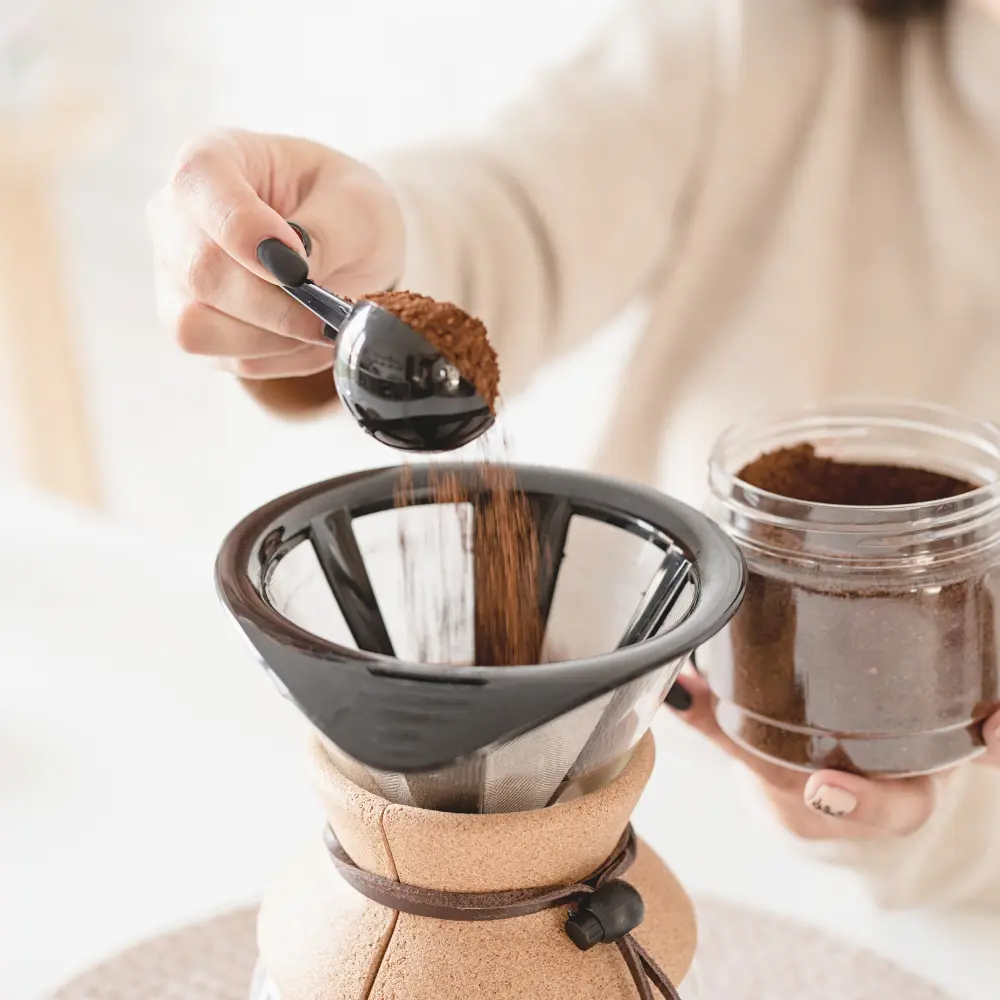
The “Golden Ratio” is a widely recognized guideline, often suggested as a starting point for brewing excellent coffee. This ratio proposes using 1 gram of coffee per 15-18 grams of water (or approximately 1:15 to 1:18). Although this ratio may not be ideal for every brewing method or individual taste preference, it serves as a valuable foundation to initiate your quest towards coffee perfection. Subsequently, you can make adjustments based on your desired strength and flavor profile.
Adjusting Ratios for Personal Taste and Brewing Methods
Each brewing method has unique characteristics that may require adjustments to the ratio used for optimal results. Moreover, personal taste preferences play a significant role in determining the ideal ratio. Experimentation with different ratios is essential to discovering the perfect balance for your palate. For instance, suppose you desire a stronger, bolder flavor. In that case, you may opt for a higher ratio, whereas a lighter, more delicate taste may necessitate a lower ratio. Remember, the key to uncovering the perfect brew is to trust your taste buds and be willing to explore various ratios and brewing methods.
Coffee-to-Water Ratios for Popular Brewing Methods

The world of coffee brewing methods can be a thrilling yet overwhelming place to navigate, as each method boasts its unique charm, flavor profiles, and techniques. To assist you in mastering the perfect brew for each method, we’ve compiled a comprehensive list of popular brewing methods and their recommended ratios. By comprehending these ratios, you’ll be one step closer to attaining that consistently delightful cup of coffee, regardless of your favored brewing method.
French Press: Immersive Flavor and Texture
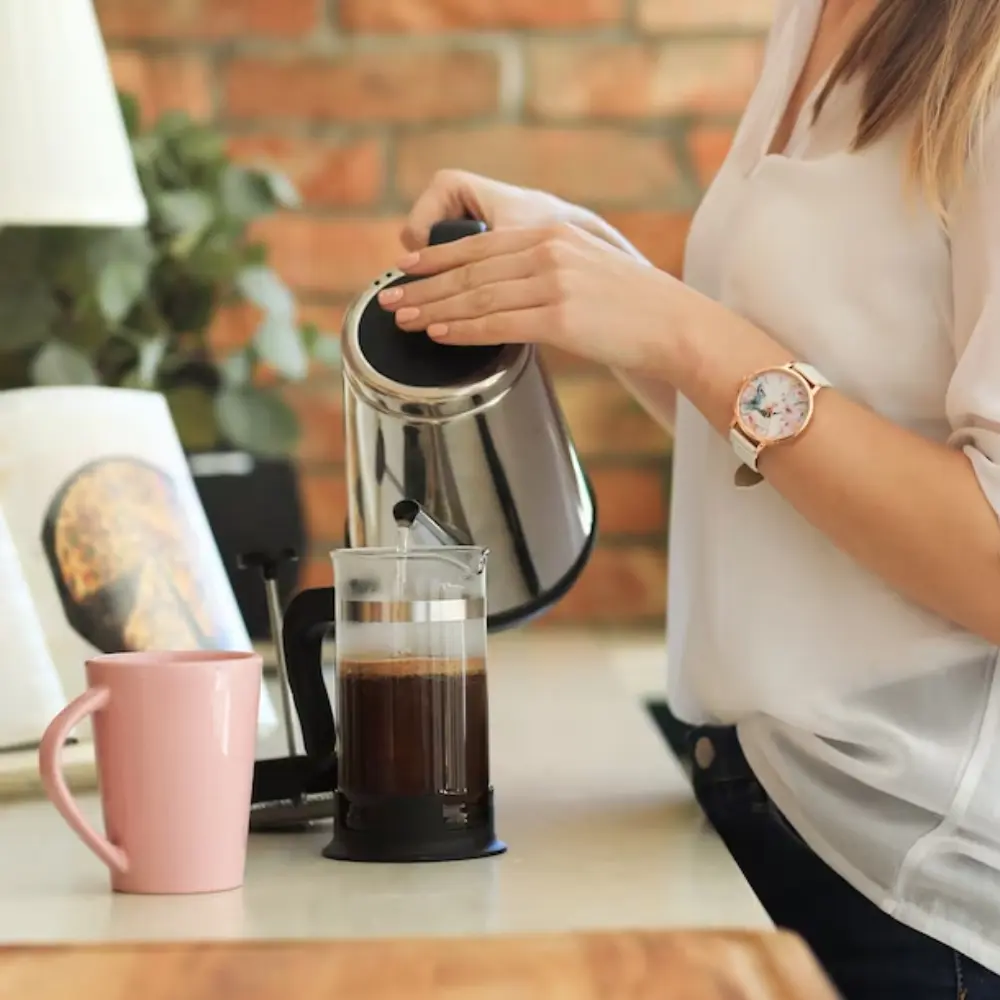
The French Press is a popular brewing method that produces a rich, full-bodied coffee with an immersive flavor and texture. (1) It utilizes a metal mesh plunger to press coffee grounds through hot water, allowing the coffee oils and fine particles to remain in the brew. The French Press coffee to water ratio is about 1:15 (1 gram of coffee per 15 grams of water), this is recommended as a starting point. Adjust the ratio to your taste preferences, and remember to use coarsely ground coffee beans to prevent over-extraction and bitterness.
Pour-Over: Precision and Control for a Balanced Brew
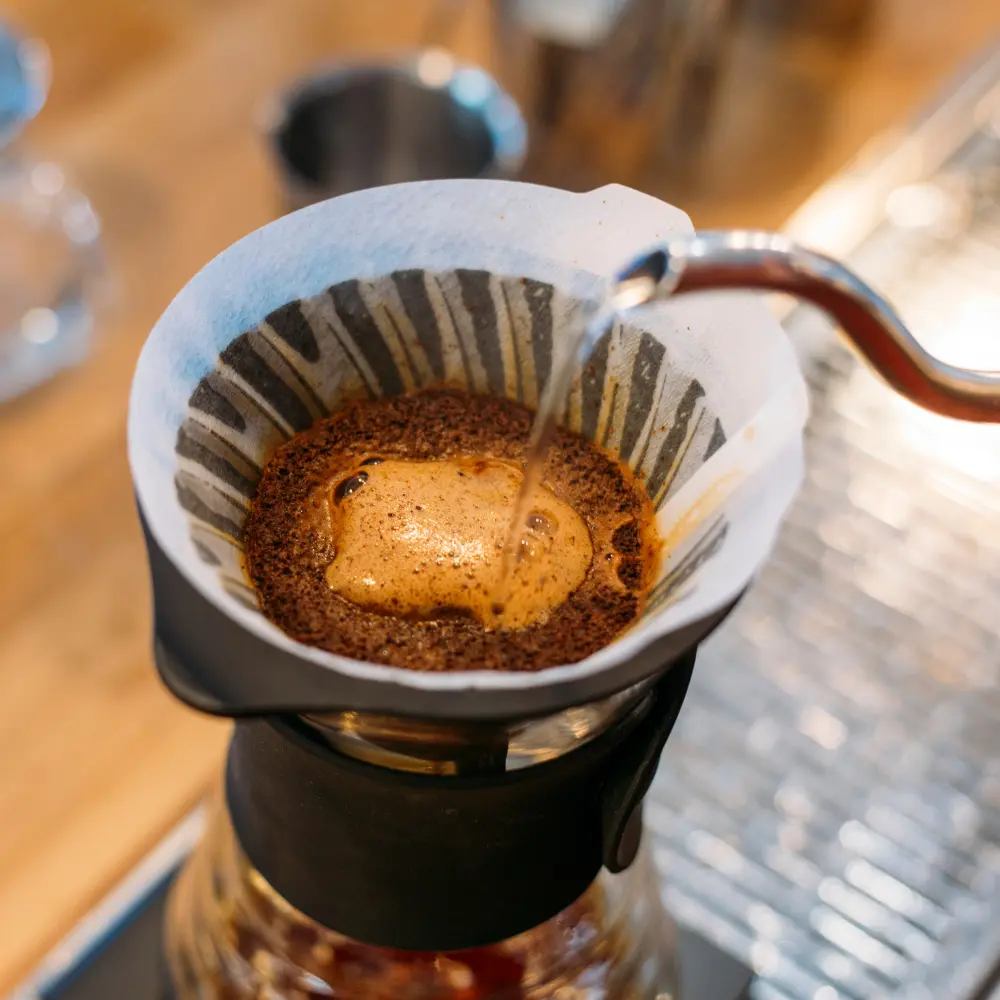
The pour-over brewing method provides precision and control, resulting in a clean, balanced, and nuanced coffee. It involves pouring hot water over coffee grounds in a conical filter, allowing the water to extract the coffee flavors slowly and evenly. The ideal pour over coffee to water ratio is 1:16 (1 gram of coffee per 16 grams of water). Use medium-fine ground coffee and adjust the ratio as needed to achieve the perfect balance of flavors for your taste.
| Preview | Product | |
|---|---|---|

| Chemex Pour-Over Glass Coffeemaker – Classic Series – 8-Cup – Exclusive Packaging | See on Amazon |

| Hario V60 Ceramic Coffee Dripper, Size 02, White | See on Amazon |
Drip Coffee Maker: Consistency and Convenience
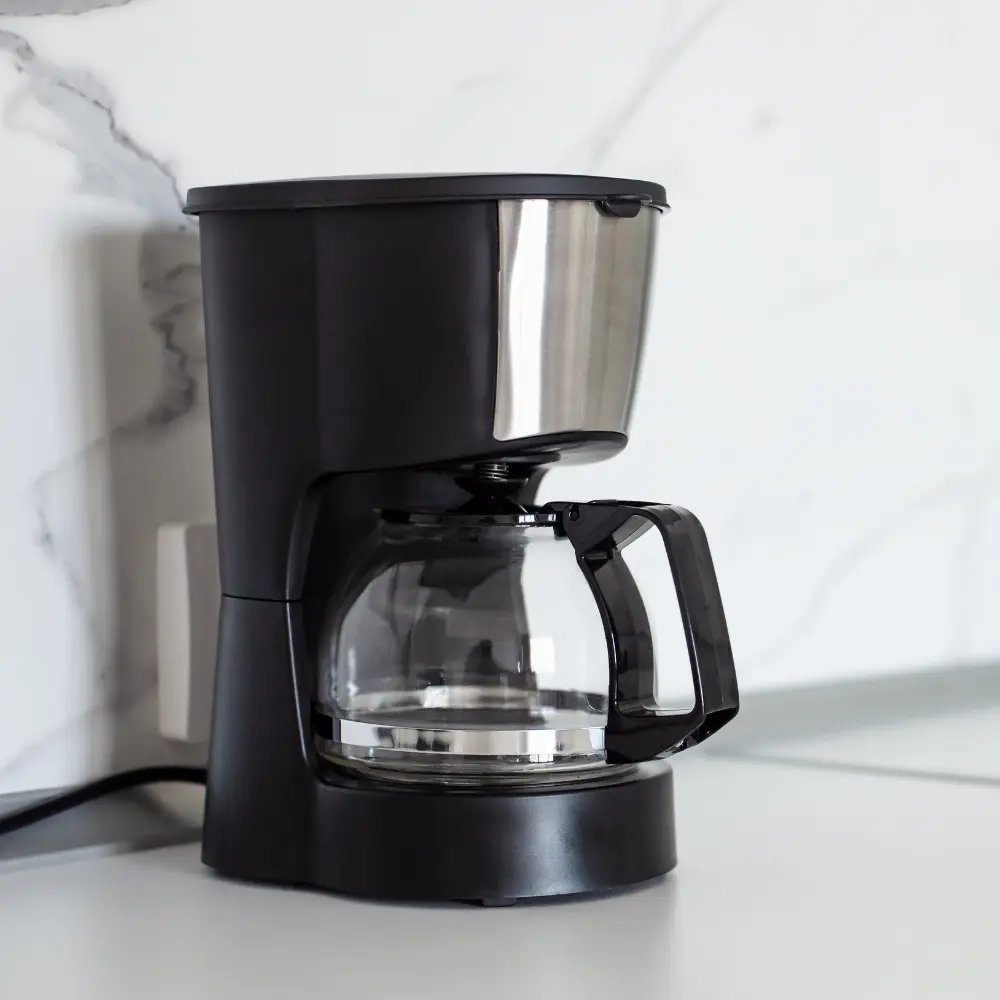
Drip coffee makers are a staple in many households, offering consistency and convenience in brewing. This method uses an automatic drip process, where hot water is poured over coffee grounds in a paper filter and then drips into a carafe or cup. A ratio of 1:15 to 1:18 is recommended for drip coffee makers, depending on your taste preferences. Start with a medium grind size and adjust as needed to achieve your desired brew strength.
AeroPress: Versatility and Full-bodied Flavor
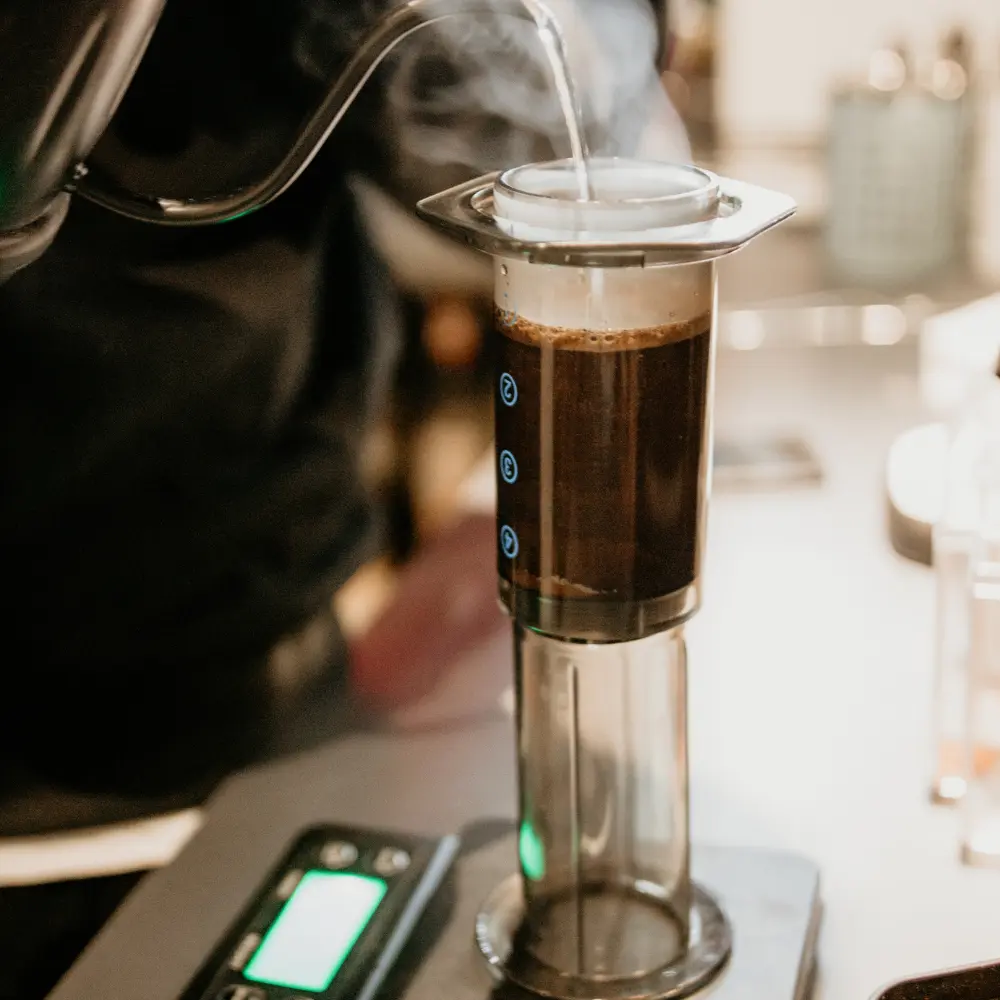
The AeroPress is a versatile and portable brewing method that produces a full-bodied, flavorful coffee with low acidity. It uses air pressure to force hot water through finely-ground coffee in a short amount of time, extracting a concentrated coffee similar to espresso. The AeroPress coffee to water ratio is 1:14 (1 gram of coffee per 14 grams of water). This is recommended as a starting point. Adjust the ratio and coffee grind size to achieve your preferred taste, experimenting with different brewing techniques, such as the inverted method, for even more versatility.
Espresso Machine: Intense and Concentrated Coffee Experience
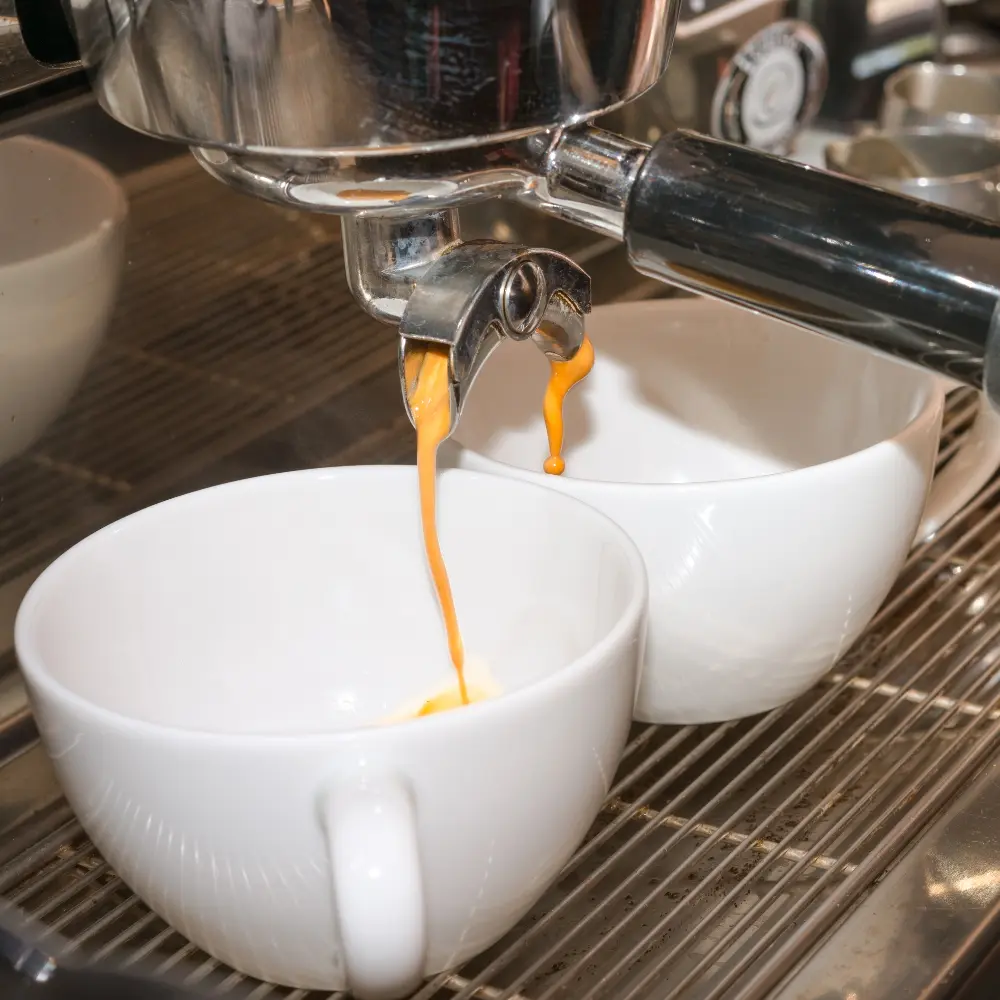
Espresso machines offer an intense and concentrated coffee experience by forcing hot water through finely-ground coffee under high pressure. The outcome is a small, robust, and aromatic shot of coffee with a crema layer on top. (2) The coffee-to-water ratio for an espresso machine is notably different from other brewing methods as it utilizes a much smaller amount of water. A standard espresso shot typically utilizes a ratio of 1:2 (1 gram of coffee per 2 grams of water). To attain the best outcomes, use a fine grind size and adjust the ratio following your taste preferences and your machine’s specifications.
| Preview | Product | |
|---|---|---|

| Breville Barista Touch Espresso Machine BES880BSS, Brushed Stainless Steel | See on Amazon |

| Breville Barista Express Espresso Machine BES870XL, Brushed Stainless Steel | See on Amazon |
Moka Pot: Rich and Bold Stovetop Espresso
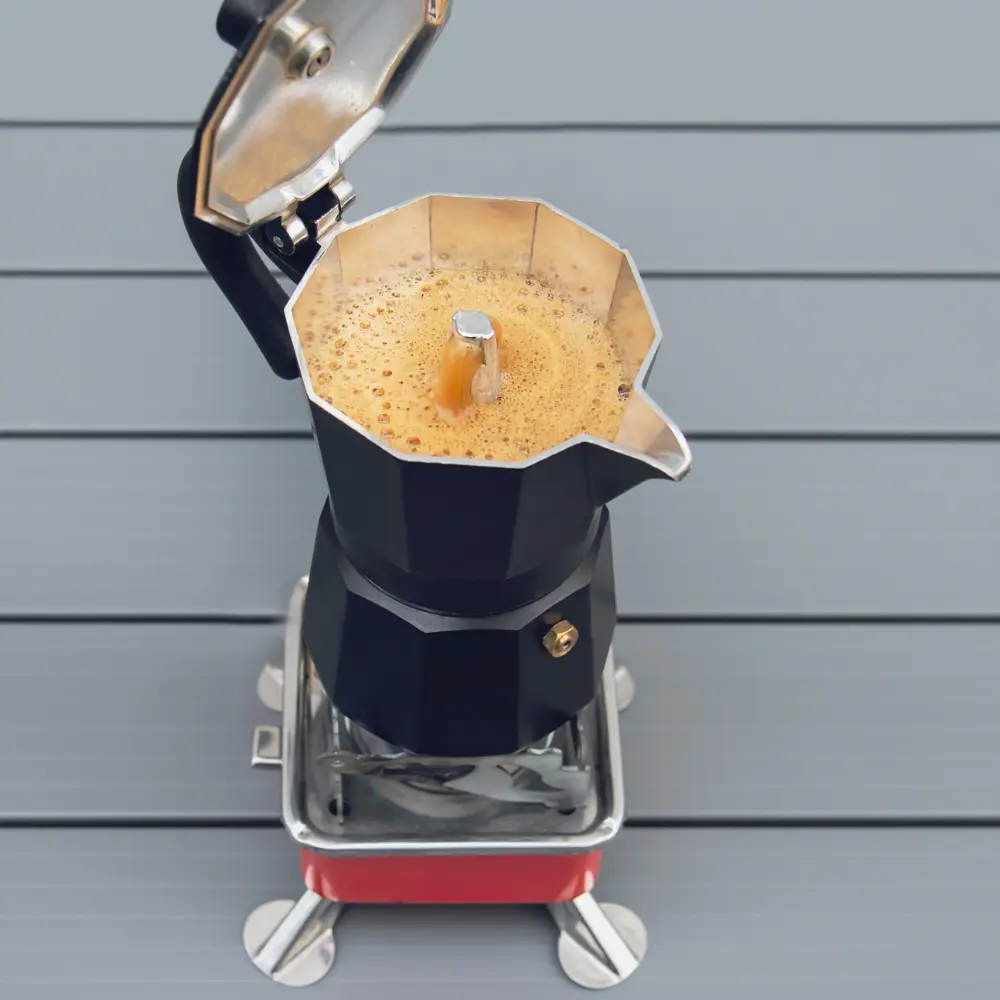
The Moka Pot is a stovetop brewing method that produces a rich and bold coffee, akin in strength and flavor to espresso. It operates by using steam pressure to push hot water through coffee grounds, resulting in a strong, full-bodied brew. For the Moka Pot, a ratio of 1:7 (1 gram of coffee per 7 grams of water) is recommended as a starting point. Use a medium-fine grind size and modify the ratio as required to achieve the desired strength and flavor. Remember to keep a watchful eye on the brewing process, as the Moka Pot necessitates meticulous monitoring to prevent over-extraction or burning.
Cold Brew: Smooth and Low-acidity Coffee

Cold brew stands out as a distinctive technique of brewing, where one immerses coarse coffee grounds in chilled water for a prolonged duration, typically spanning 12 to 24 hours. This process results in a smooth, low-acidity coffee with a naturally sweet taste. The Cold brew coffee-to-water ratio is generally higher than other methods due to the extended extraction time. A ratio of 1:8 (1 gram of coffee per 8 grams of water) is a good starting point for cold brew. Modify the ratio and steeping time according to your taste preferences and relish the refreshing, smooth flavor of cold brew coffee.
| Preview | Product | |
|---|---|---|

| Instant Cold Brew Electric Coffee Maker, From the Makers of Instant Pot, Customize Your Brew… | See on Amazon |

| OXO Good Grips 32 Ounce Cold Brew Coffee Maker,Black | See on Amazon |
Siphon Coffee: Theatrical Brewing with a Clean and Crisp Result
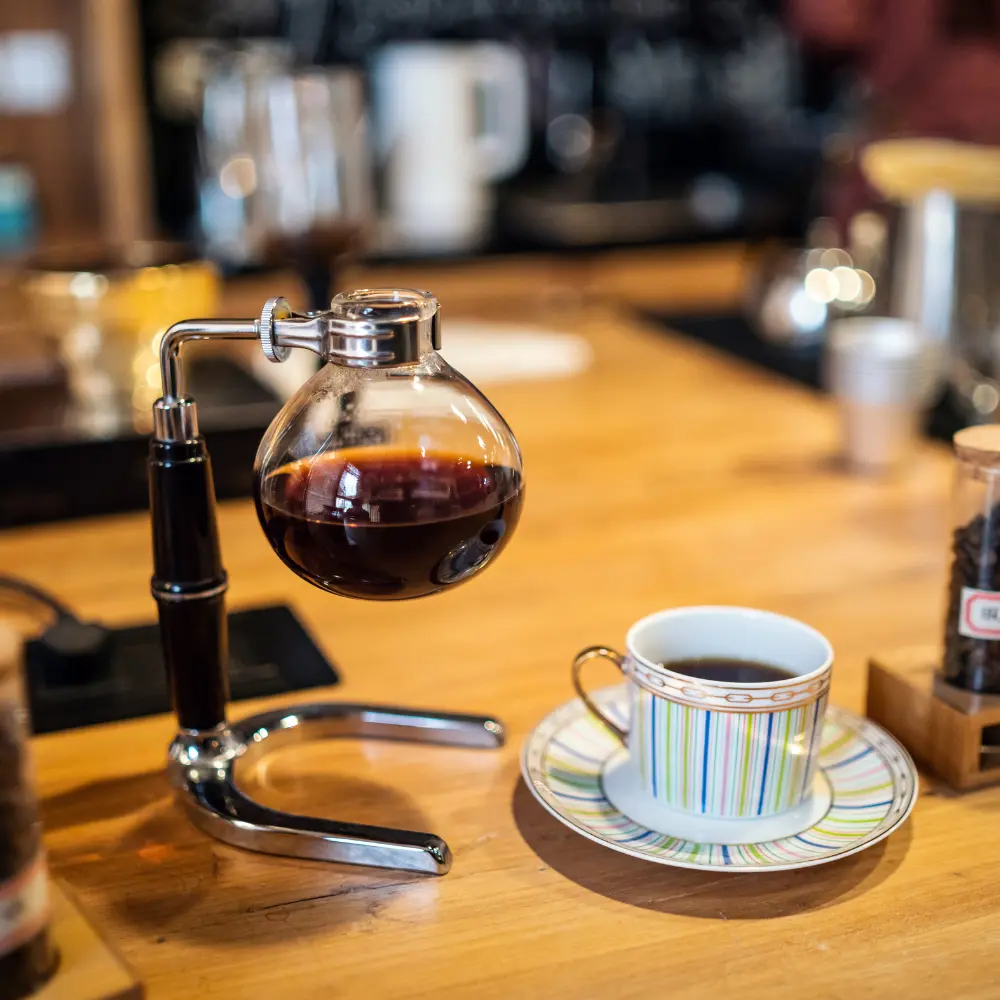
Siphon coffee, also known as vacuum pot coffee, is a theatrical brewing method that produces a clean and crisp coffee with a distinct aroma. It uses a unique two-chamber system where water vapor pressure forces hot water into the upper chamber containing coffee grounds, and vacuum suction pull the brewed coffee back into the lower chamber. For siphon coffee, a ratio of 1:15 (1 gram of coffee per 15 grams of water) is recommended. Use a medium grind size and adjust the ratio according to your taste preferences. The siphon coffee method requires a bit of practice and patience, but the resulting coffee experience is well worth the effort.
| Preview | Product | |
|---|---|---|

| Hario “Technica” Coffee Syphon, 600ml | See on Amazon |

| Solac SIPHON BREWER 3-in-1 Vacuum Coffee Maker, Tea Brewer & Water Boiler, Brushed Stainless Steel… | See on Amazon |
Turkish Coffee: Traditional and Unfiltered Coffee Experience
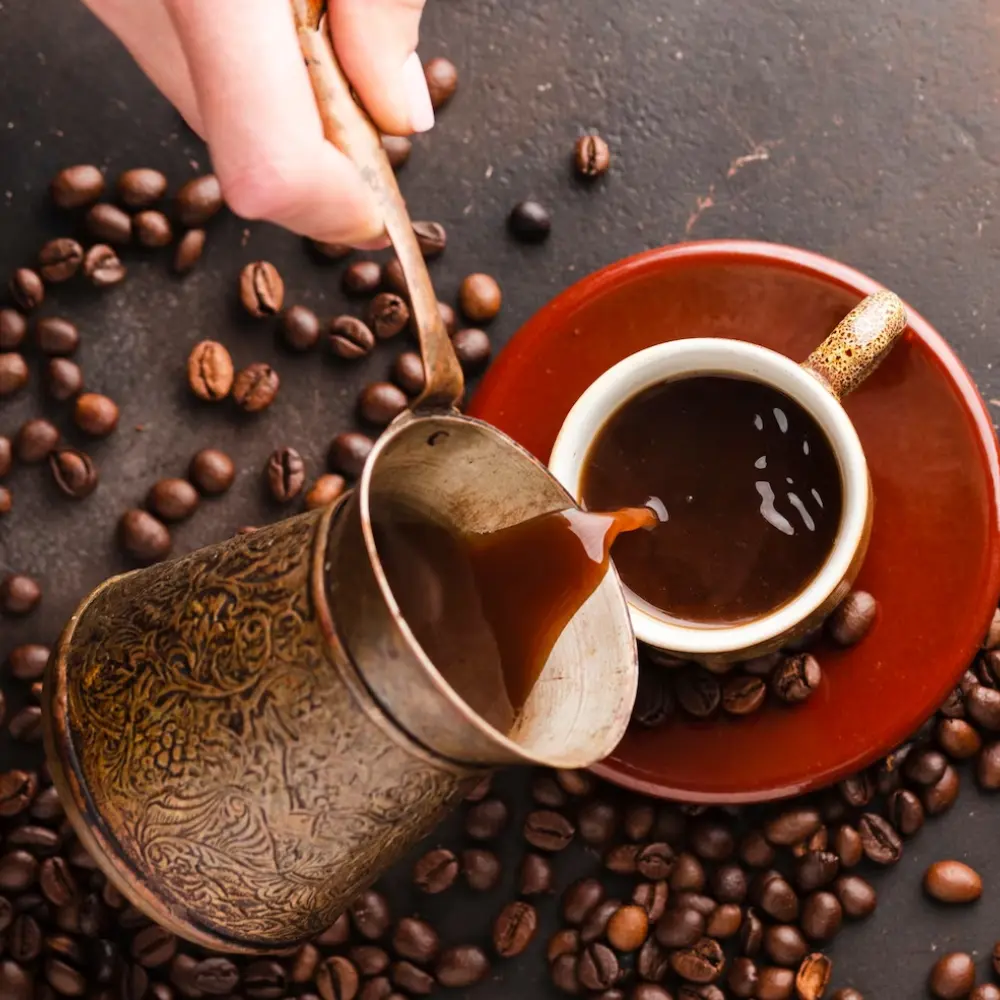
Turkish coffee is a centuries-old brewing method that offers a unique, traditional, and unfiltered coffee experience. It is prepared by boiling finely ground coffee and water together in a special pot called a cezve, along with sugar if desired. For Turkish coffee, a ratio of 1:10 (1 gram of coffee per 10 grams of water) is recommended. Use an extra-fine grind size, almost powder-like, to ensure proper extraction. Turkish coffee is served unfiltered, so expect a strong, bold flavor with a slightly thicker texture, often accompanied by a layer of foam on top.
Chemex: Clarity and Elegance in a Classic Design

The Chemex is a pour-over brewing method that combines clarity and elegance with its classic glass design and specially designed filters. These filters are thicker than regular paper filters, resulting in a clean, bright, and sediment-free coffee. The Chemex coffee to water ratio is 1:15 (1 gram of coffee per 15 grams of water), this is recommended as a starting point. Use a medium-coarse grind size and adjust the ratio according to your taste preferences. The Chemex brewing process requires a bit more attention and precision, but the resulting coffee showcases the delicate and nuanced flavors of your chosen beans.
- CHEMEX – simple, easy to use with timeless, elegant design
- All CHEMEX Coffeemakers are made of the highest quality, non-porous Borosilicate glass which will not absorb odors or chemical residues
- The patented CHEMEX pour-over design allows coffee to be covered and refrigerated for reheating without losing flavor
- All CHEMEX Coffeemakers are measured using 5 oz. as 1 cup
- Use CHEMEX Bonded Filters FP-1, FC-100, FS-100, FSU-100
Measuring Coffee and Water Accurately
Accurate measurements of coffee and water are essential for achieving a consistent and delicious brew. In this section, we’ll explore the tools and techniques for precise coffee and water measurements, as well as the importance of water quality and temperature in the brewing process.
Coffee Scales: Precision in Measuring Coffee Beans
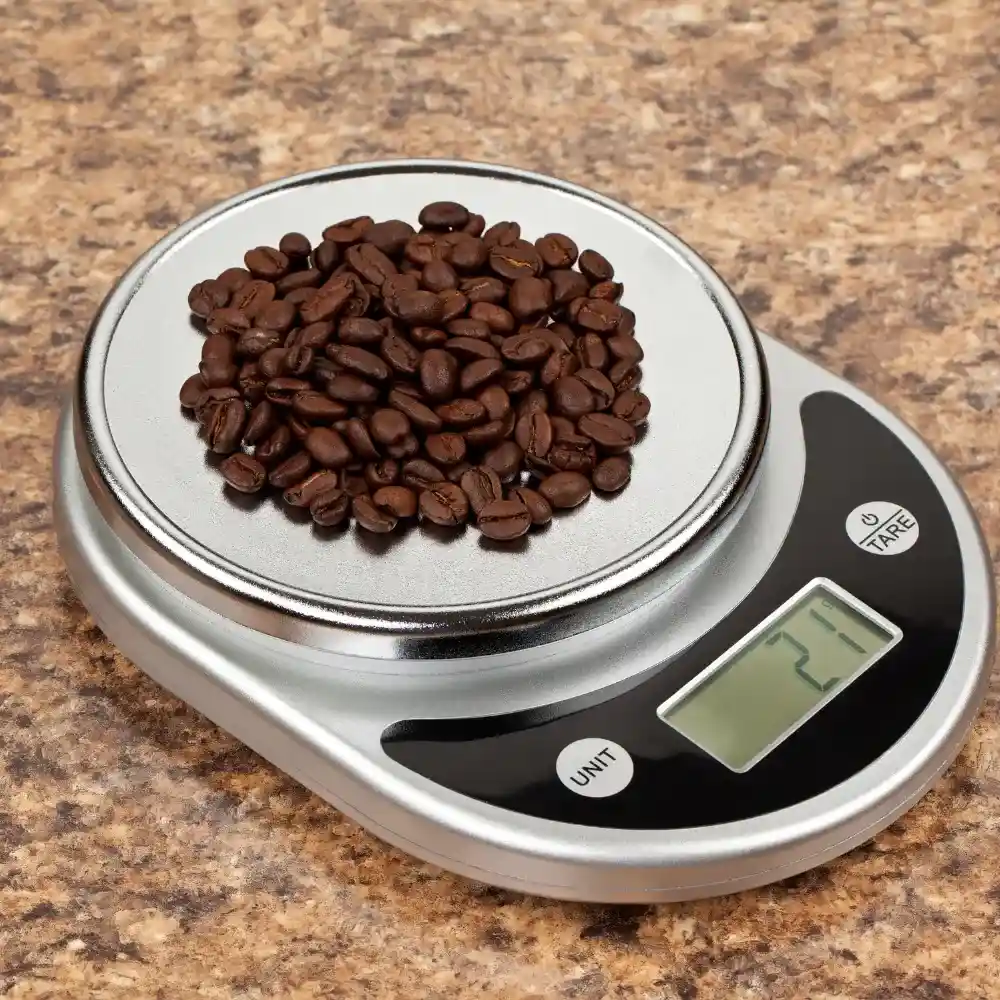
A coffee scale is an indispensable tool for measuring coffee beans with precision. By weighing your coffee beans rather than relying on scoops or spoons, you can ensure consistent brewing results. Look for a scale that measures in grams and has a tare function to zero out the weight of your container. A small investment in a coffee scale can elevate your coffee brewing experience and help you master the ideal ratio for your preferred brewing method.
| Preview | Product | |
|---|---|---|

| Hario V60 Drip Scale, Black (New Model) | See on Amazon |
Measuring Water Volume with a Kitchen Scale or Measuring Cup

Precision in water measurement is just as crucial as a coffee measurement for the perfect brew. Using a kitchen scale to weigh your water in grams ensures consistency and accuracy. Alternatively, a measuring cup with volume markings in milliliters or fluid ounces can also be used to measure water precisely. Keep in mind that 1 gram of water is roughly equivalent to 1 milliliter, making it effortless to convert between weight and volume measurements.
The Importance of Water Quality and Temperature
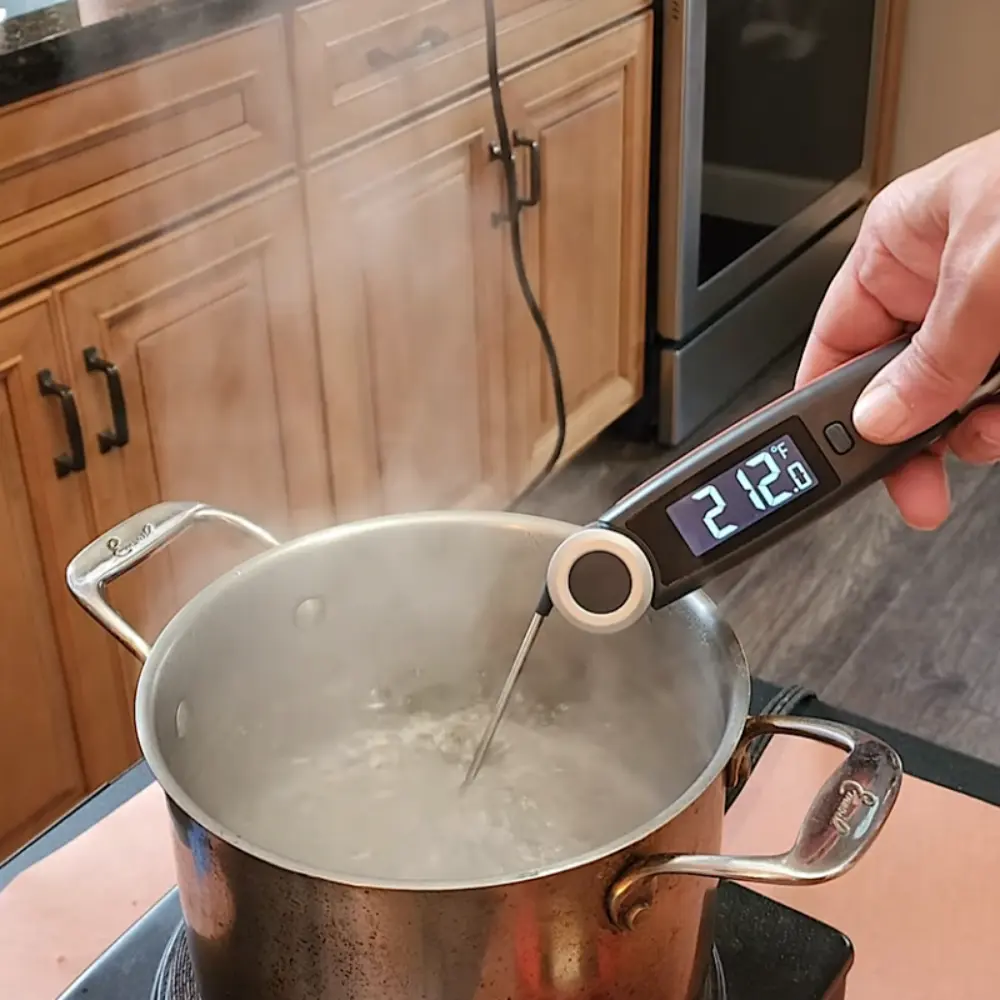
The quality and temperature of the water utilized in your brew have a substantial impact on the final taste and extraction of your coffee. Use filtered or bottled water to avoid impurities and off-flavors that may exist in tap water. The optimal brewing temperature for most methods falls between 195°F (90°C) and 205°F (96°C). (3) Using excessively hot water can lead to over-extraction and bitterness, while water that is too cool may result in under-extraction and a weak, sour taste. Investing in a variable-temperature kettle can assist you in achieving the ideal water temperature for your preferred brewing method.
| Preview | Product | |
|---|---|---|

| Fellow Stagg EKG Electric Gooseneck Kettle – Pour-Over Coffee and Tea Kettle – Stainless Steel… | See on Amazon |
Grinding and Coffee-to-Water Ratio
The grind size of your coffee plays a critical role in the extraction process. In this section, we shall discuss how grind size affects extraction, how to match grind size to your brewing method, and the significance of freshly grinding coffee for optimal flavor and aroma.
The Impact of Grind Size on Extraction

Grind size holds a substantial impact on the extraction of flavors and compounds from coffee grounds. A finer grind exposes a larger surface area of coffee particles to water, resulting in faster extraction, whereas a coarser grind has a smaller surface area, leading to slower extraction. Using the right grind size for your brewing method helps ensure balanced extraction and a well-rounded flavor profile. Over-extraction can transpire with too fine a grind, leading to bitterness, while under-extraction with too coarse a grind may result in a weak, sour taste.
Matching Grind Size to Brewing Method
Each brewing method necessitates a specific grind size to achieve optimal extraction and flavor. For instance, espresso machines require a fine grind for the rapid extraction process, while a coarse grind is suitable for slower methods like French press and cold brew. Here is a general guideline for matching grind size to popular brewing methods:
- Espresso: Fine grind
- Moka Pot: Medium-fine grind
- AeroPress: Medium-fine grind
- Pour-over (V60, Kalita Wave, Chemex): Medium-coarse grind
- French Press: Coarse grind
- Cold Brew: Coarse grind
- Siphon: Medium grind size
- Turkish Coffee: Extra-fine grind size
Freshly Grinding Coffee for Optimal Flavor and Aroma
Freshly grinding your coffee beans right before brewing ensures the ideal flavor and aroma in your cup. Pre-ground coffee loses its freshness and aromatic qualities more rapidly due to increased exposure to oxygen. Investing in a quality burr grinder allows you to grind your coffee beans consistently and modify the grind size to match your brewing method. By freshly grinding your beans, you’ll maximize the potential of your coffee-to-water ratio and revel in a more satisfying, aromatic coffee experience.
Expert Tips and Tricks for Perfecting Your Coffee

To achieve coffee brewing expertise, an arduous journey of skill development is a must. It involves meticulous attention to a myriad of factors that intricately interplay, ultimately determining the final taste and aroma of your brewed coffee. In this section, we shall delve into the realm of coffee brewing artistry, sharing with you a plethora of expert tips and tricks that will help you unleash your inner barista, as you experiment with ratios and brewing techniques, select the finest coffee beans, and ensure consistent brewing outcomes.
Experimenting with Ratios and Brewing Techniques
Embarking on the quest for the perfect ratio and brewing technique is a personal odyssey that entails scrupulous experimentation, tweaking, and refinement. The journey commences by adhering to recommended ratios and grind sizes, aligned with your preferred brewing method, which serves as a foundation for your creative experimentation. However, your palate’s unique preferences will dictate the perfect balance between coffee and water, thus necessitating the artful tweaking of ratios and grind sizes. Similarly, exploring alternative brewing techniques such as immersion and pour-over methods can unlock a world of coffee flavors and textures, unveiling new dimensions of taste that resonate with your personal palate proclivities.
Coffee Beans: Freshness, Roast, and Origins

The pivotal role of coffee beans in shaping the taste and aroma of your brew cannot be overstated. To unlock a symphony of flavors, it’s crucial to choose freshly roasted beans from a reputable roaster, preserving their freshness by storing them in an airtight container. Be adventurous in your coffee bean selection, exploring different origins, and their unique flavor profiles. The fruity and bright African beans or earthy and full-bodied Indonesian varieties are just the tip of the iceberg, awaiting discovery.
Moreover, the roast level of the beans is an art in itself, with light, medium, and dark roasts offering distinct taste and aroma profiles. The perfect complement to your preferred brewing method and palate preferences can only be unveiled through mindful experimentation.
Consistency is Key: Replicating Success in Your Brewing Process
Once you’ve reached your ideal ratio and mastered your preferred brewing technique, the journey doesn’t end there. The key to unlocking a consistent and perfect cup of coffee is replicating your success in your brewing process every time. Precision and attention to detail are paramount, beginning with exact measurements for coffee and water, keeping your brewing equipment clean and well-maintained, and following the same brewing steps each time.
The devil lies in the details; even seemingly minor factors such as water temperature and brewing time can significantly impact the final taste of your coffee. By mastering consistency in your brewing process, you’ll be able to indulge in the perfect cup of coffee each time, a truly unrivaled experience.
Conclusion
In conclusion, the journey to mastering the art of coffee brewing involves a delicate balance of science and creativity. Achieving the perfect brew demands a thorough understanding of the coffee-to-water ratio, measured with precision, accompanied by the right grind size and brewing technique. By embracing the power of experimentation, you can explore a myriad of coffee beans, roasts, and origins, unveiling unique flavor profiles that speak to your taste preferences.
To savor the perfect cup of coffee each time, consistency is key. Adhering to precise measurements, keeping your brewing equipment clean, and following the same brewing steps each time can ensure that your coffee experience remains unmatched. So, go ahead and embark on this enchanting journey, relishing in the endless possibilities of flavors and textures that await you in the world of coffee. Happy brewing!
FAQ
How does grind size affect the coffee-to-water ratio?
Grind size plays a critical role in the coffee-to-water ratio as it affects the extraction process. Finer grinds expose more surface area, leading to faster extraction, while coarser grinds provide slower extraction. Therefore, the ratio may require adjustments depending on the grind size to achieve balanced extraction and optimal flavor.
What are the recommended coffee-to-water ratios for different brewing methods?
The recommended ratios vary depending on the brewing method employed. However, typical starting points include 1:15 for French press, 1:16 for pour-over, 1:15 to 1:18 for drip coffee maker, and 1:8 for cold brew. These ratios can be further adjusted based on individual preferences.
How does water temperature impact the extraction process in coffee brewing?
Water temperature is also a significant factor that impacts the extraction process in coffee brewing. High temperatures lead to faster extraction, while lower temperatures result in slower extraction. To achieve balanced extraction and optimal flavor, the ideal water temperature for most brewing methods falls between 195°F and 205°F (90°C to 96°C).
Why is using a kitchen scale important when measuring coffee and water?
Using a kitchen scale is highly recommended when measuring coffee and water to ensure precise and consistent measurements. This is crucial in achieving the desired ratio, maintaining consistency throughout the brewing process, and replicating the perfect cup of coffee every time.










